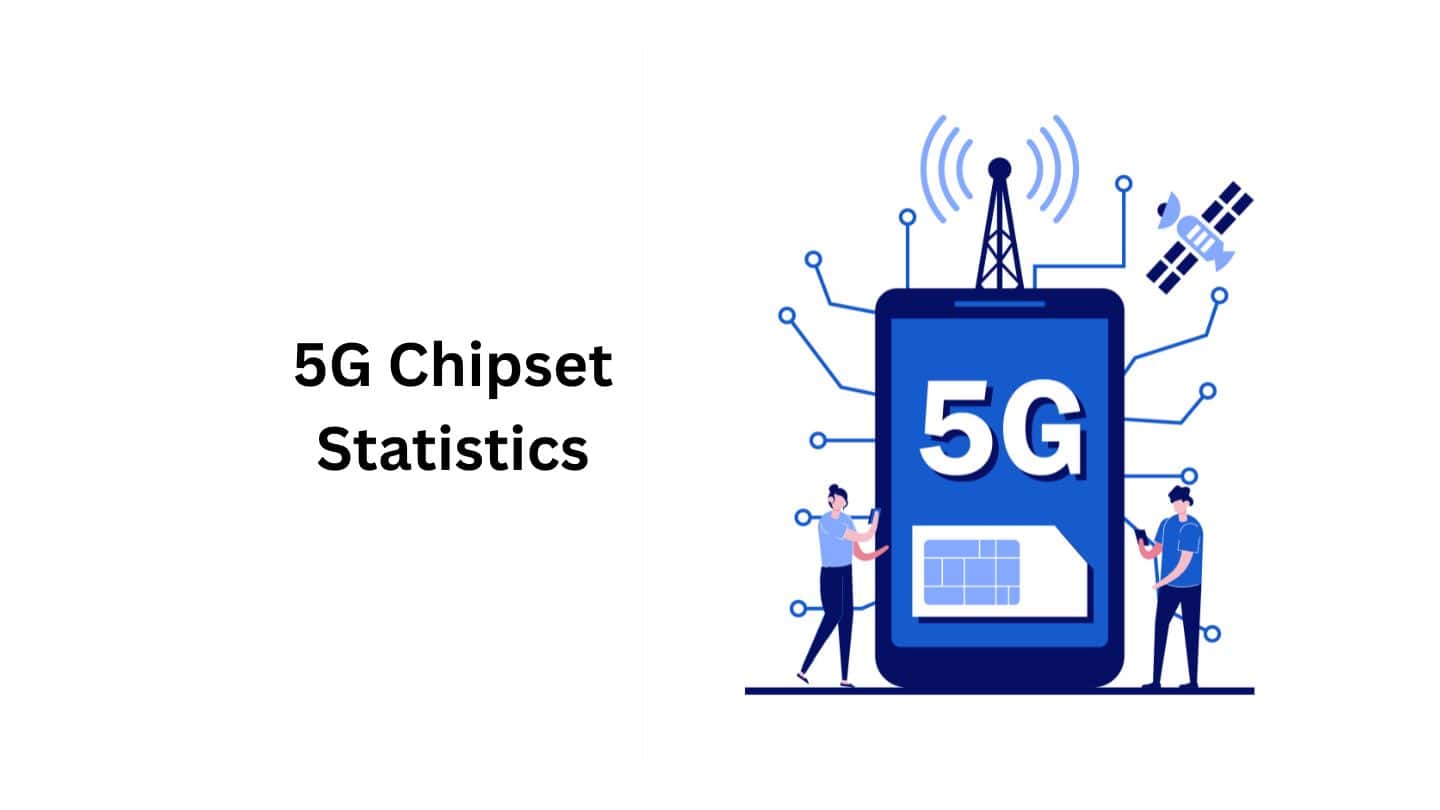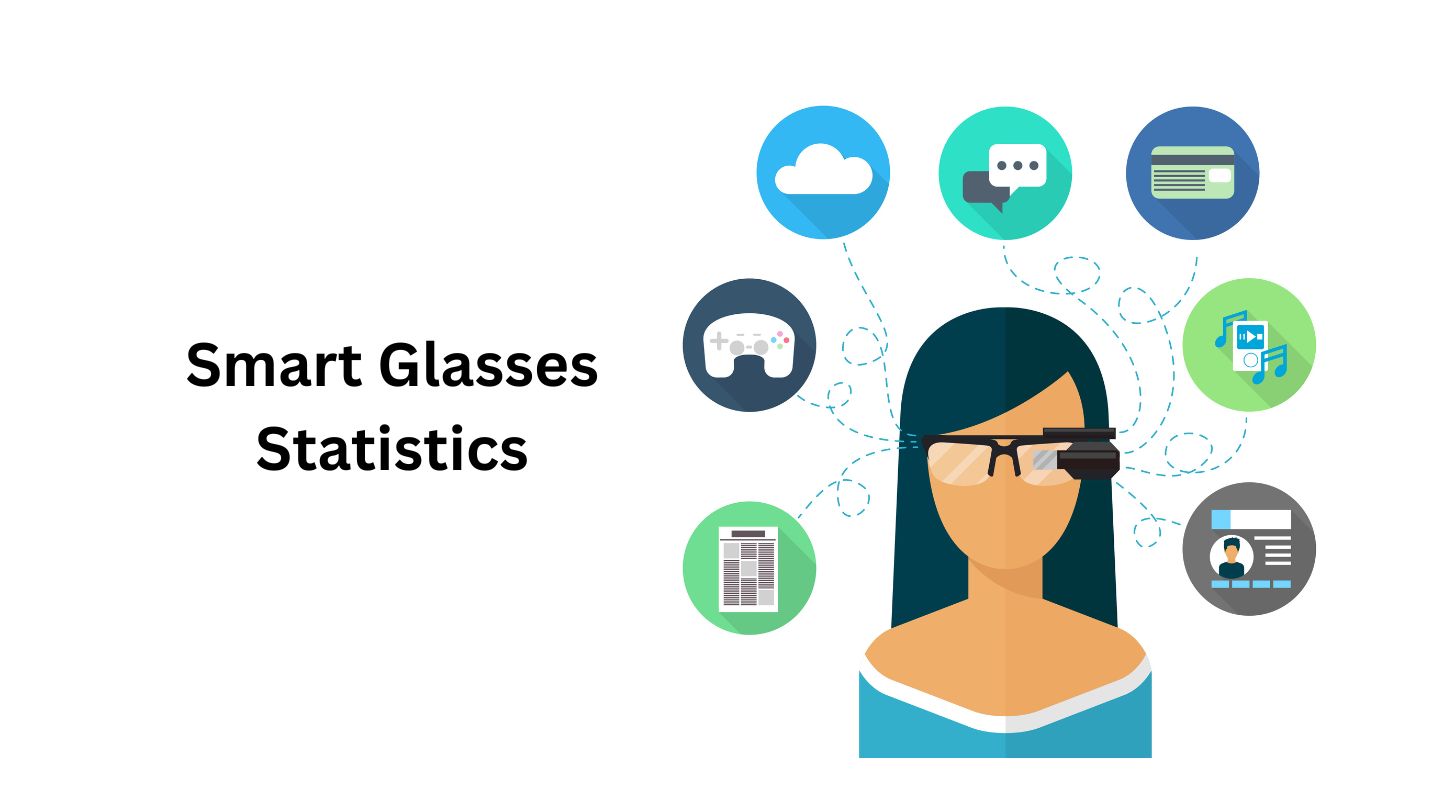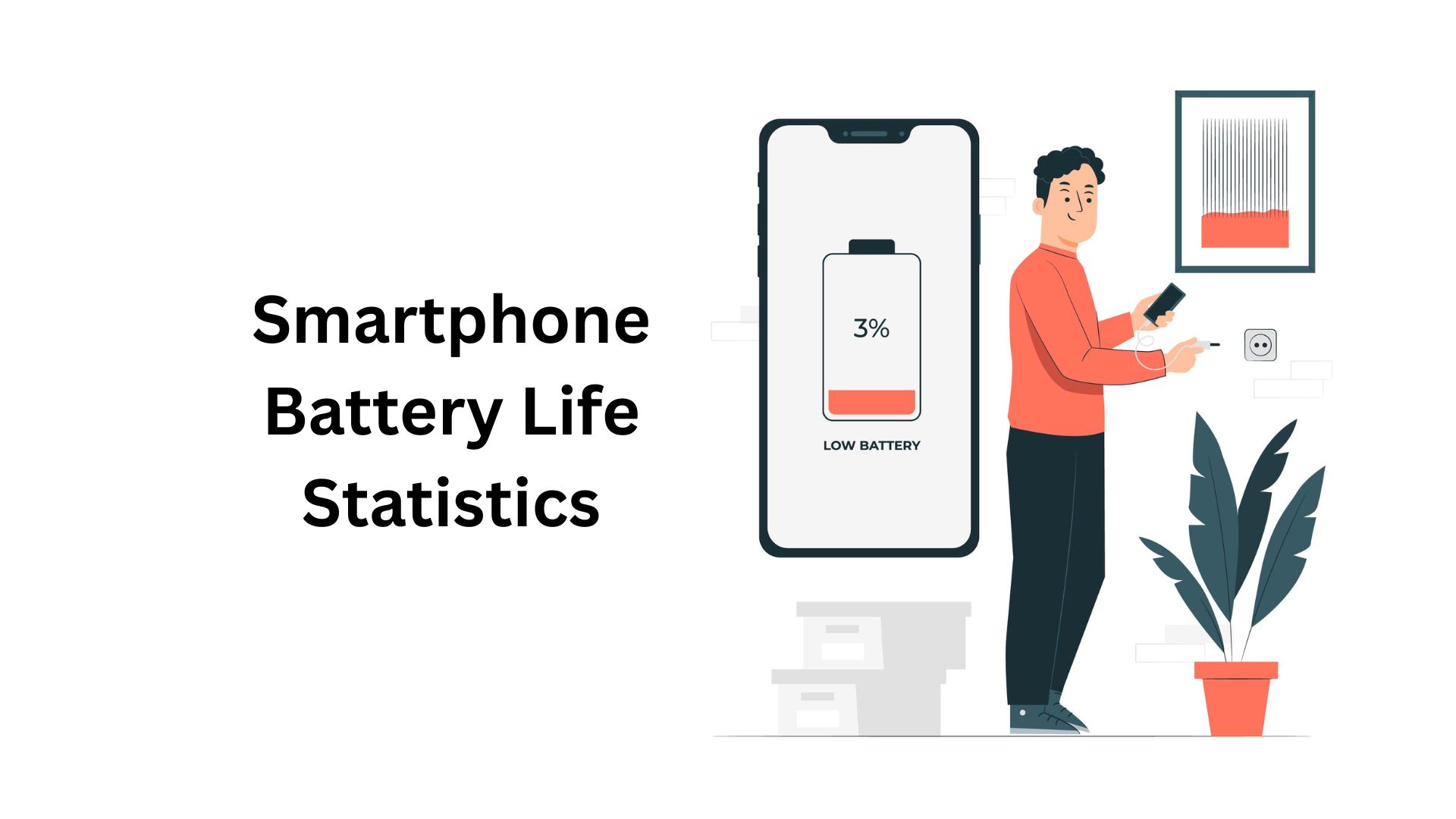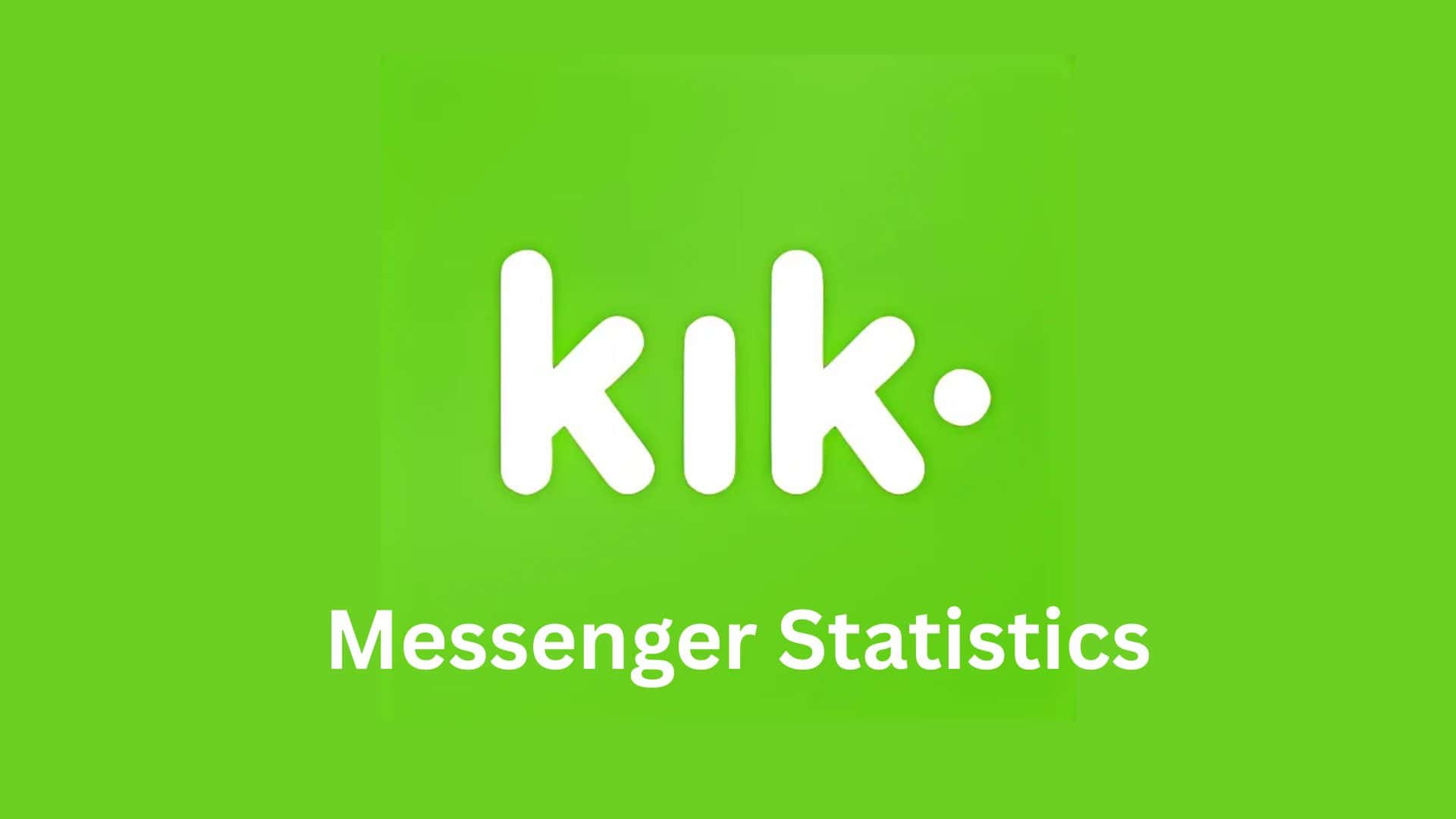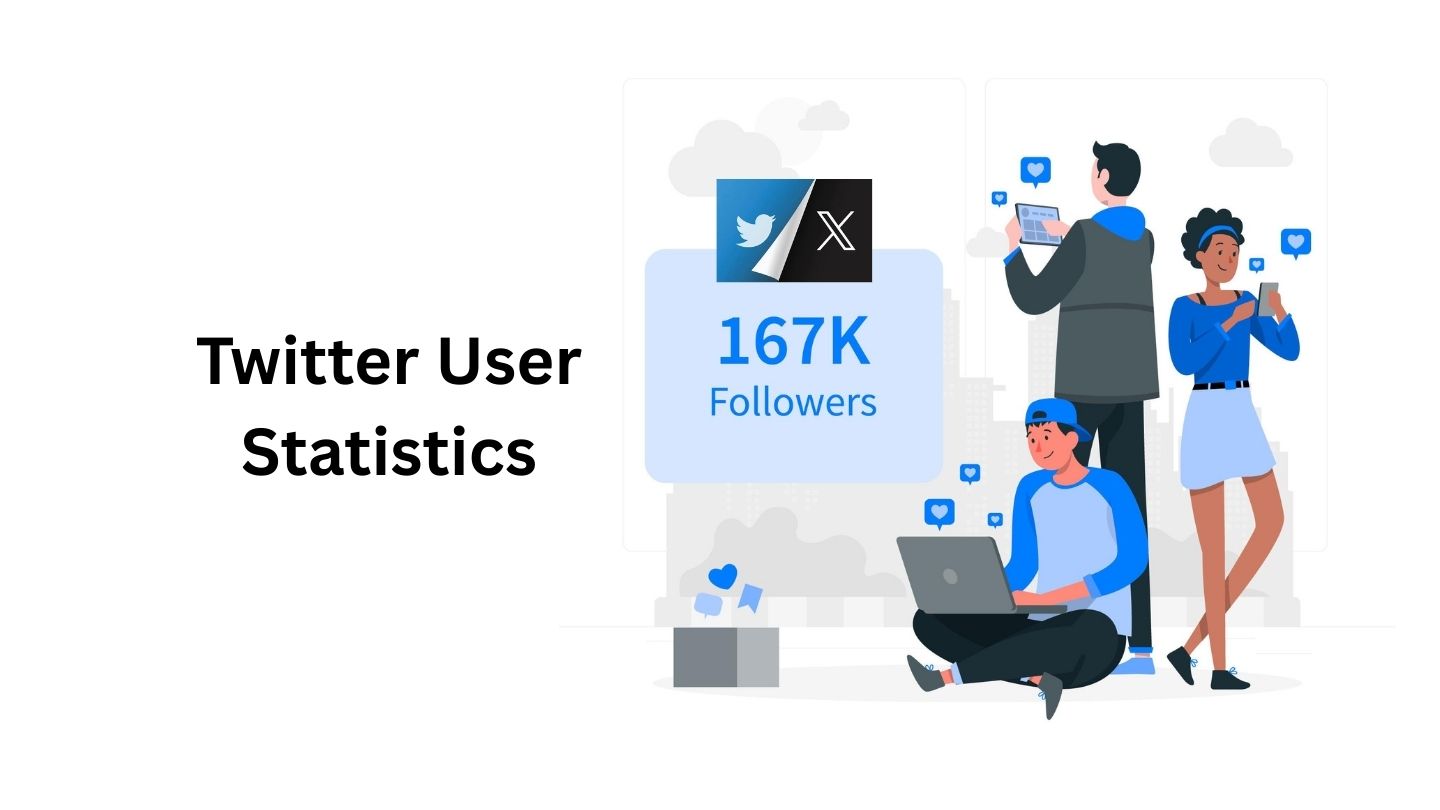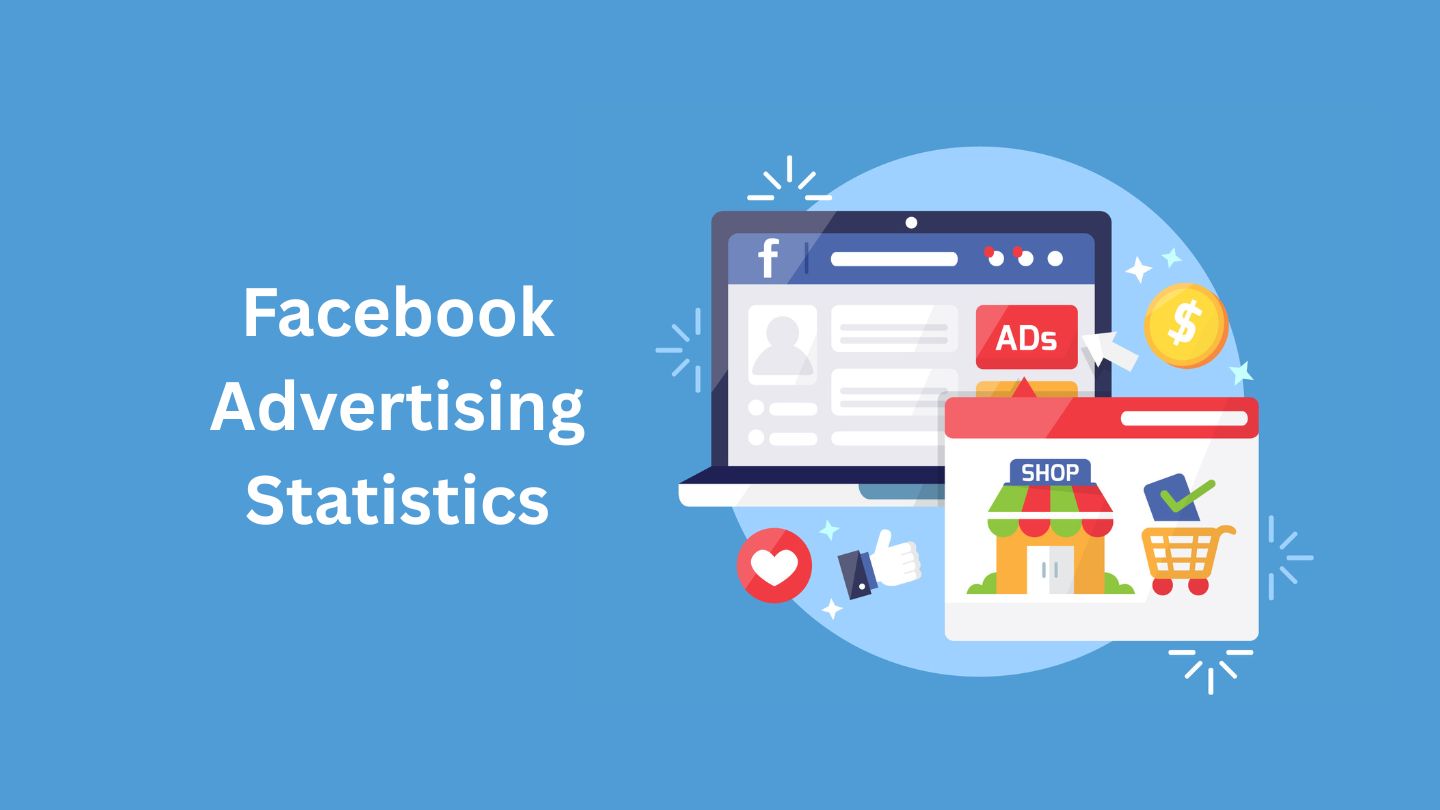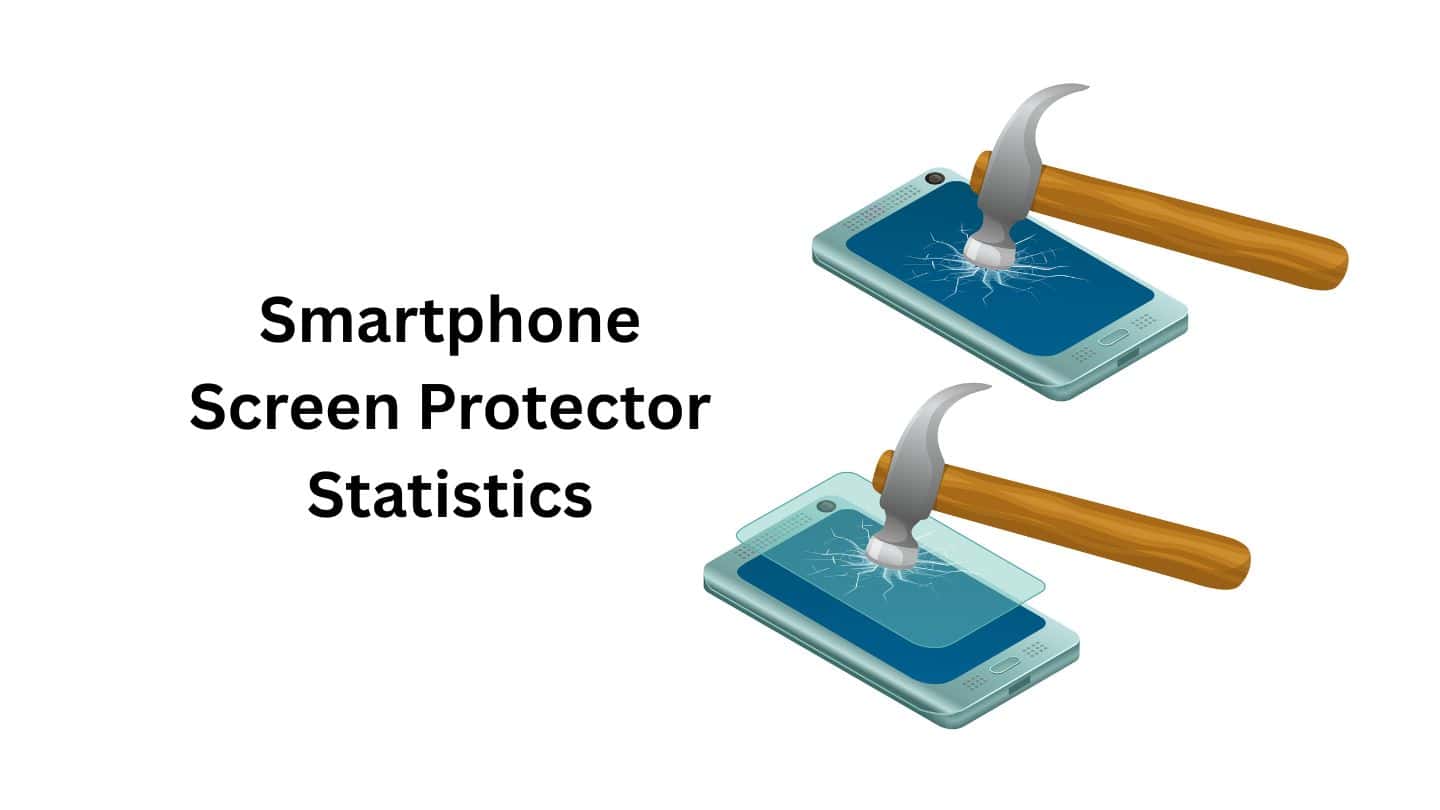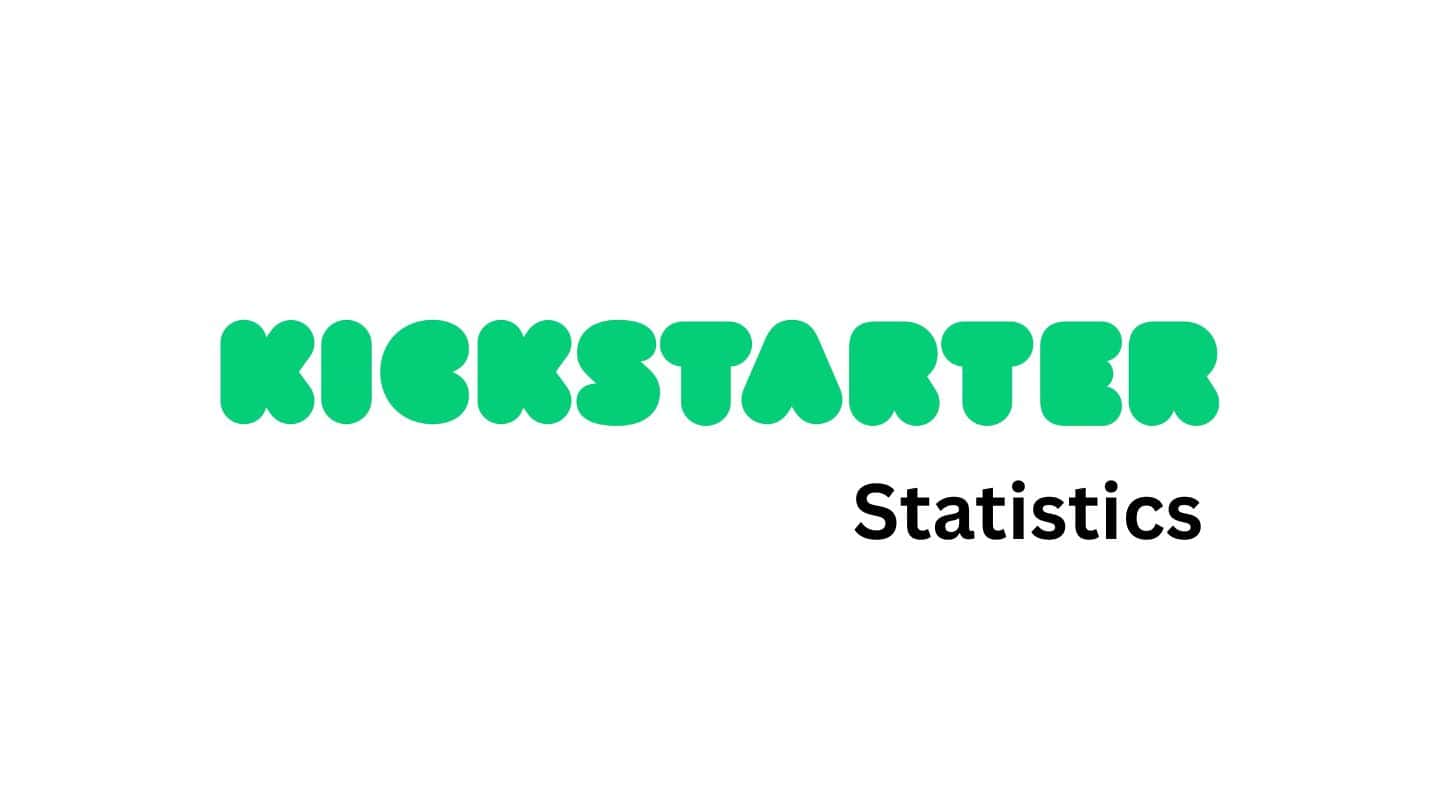Smartphone Screen Protector Statistics and Facts (2025)

Updated · Apr 07, 2025


TABLE OF CONTENTS
Introduction
Smartphone Screen Protector Statistics: The widespread adoption of smartphones has led to a notable increase in the demand for screen protectors, which serve to safeguard devices from scratches, cracks, and other forms of damage. In 2023, the global smartphone screen protector market was valued at approximately USD 49.73 billion. This growth is driven by the rising awareness among consumers about the importance of maintaining their devices’ screen integrity. Tempered glass has emerged as the preferred material for screen protectors, accounting for a significant market share due to its superior durability and protective qualities.
Additionally, the increasing affordability and availability of high-quality screen protectors have further contributed to their widespread adoption. As smartphones continue to play an integral role in daily life, the emphasis on device protection remains paramount, underscoring the essential role of screen protectors in prolonging the lifespan and functionality of these devices.
Editor’s Choice
- As more developing countries continue to go digital, the number of people using smartphones steadily rises.
- Smartphone Screen Protector Statistics stated that the United States leads the global smartphone market, followed by China and India.
- Rapid progress in 5G technology, enhanced camera features, and larger storage options are encouraging more people to purchase smartphones, which in turn is boosting demand for screen protectors.
- As consumers’ spending power increases, they purchase more advanced smartphones in higher volumes. Those who buy premium devices are also more willing to invest in expensive, high-quality screen protectors.
- The growing durability and effectiveness of modern screen protectors are also contributing to market growth. Tempered glass protectors, in particular, are trusted by many users for their strong protective qualities. The market is expected to keep expanding as these products continue to improve.
General Smartphone Screen Protector Statistics
- Some screen protectors offer more than screen safety—they also help reduce eye strain. Certain models are designed to block UV rays, cut down on glare, and offer other features that protect users’ eyes and enhance the
- overall experience.
- The global smartphone screen protector industry is expected to reach $93 billion by 2032, growing at an annual growth rate (CAGR) of 6.9%. As of 2022, the market was valued at approximately $48.5 billion.
- Businesses in this space have several ways to expand, such as:
-
- Adding advanced features to their products
- Moving into new and growing markets
- Creating partnerships with smartphone makers
- Companies are introducing screen protectors with privacy filters and germ-resistant (antimicrobial) layers
- Customization and design personalization are becoming more popular as people want unique styles
- The rise of online shopping is making e-commerce a key sales channel
- The worldwide increase in smartphone use has boosted the need for protective accessories, especially screen protectors, as people want to protect their expensive devices.
- The 2.5D screen protector segment makes up the biggest chunk of the market, with 52% of the revenue
- Smartphone Screen Protector Statistics The 3D screen protector segment is expected to grow the fastest in the next few years
- Tempered glass leads the market, holding a 90% share
- TPU (thermoplastic polyurethane) protectors are growing in popularity and are expected to be the fastest-growing type
- 21mm thick protectors are the most commonly sold, making up 48% of the market
- Smartphone Screen Protector Statistics stated that the 0.26mm protectors are expected to grow faster than other sizes
- Asia-Pacific was the biggest regional market in 2022, contributing 38.6% of total revenue
- North America is predicted to grow the fastest due to the strong demand for eco-friendly protectors and the presence of top smartphone brands.
Smartphone Screen Protector Regional Statistics
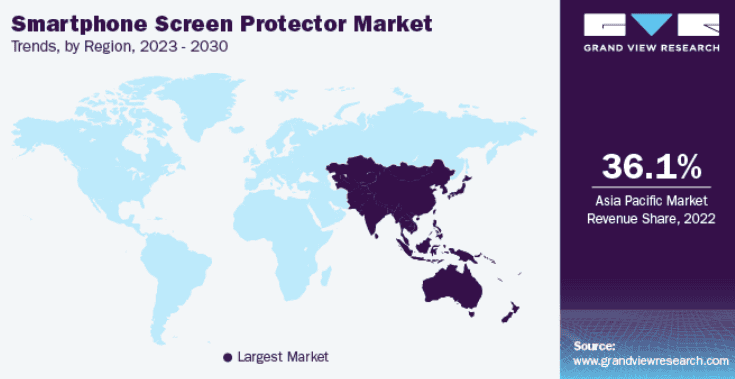 (Source: grandviewresearch.com)
(Source: grandviewresearch.com)
#1. North America
- The smartphone screen protector market in North America is expected to increase at a CAGR of 6.3% from 2024 to 2031.
- This growth is driven by the rising popularity of premium, high-priced smartphones across the region.
- As more people invest in expensive technology, the need for reliable screen protection increases. At the same time, a rise in household income is also contributing to the market’s expansion.
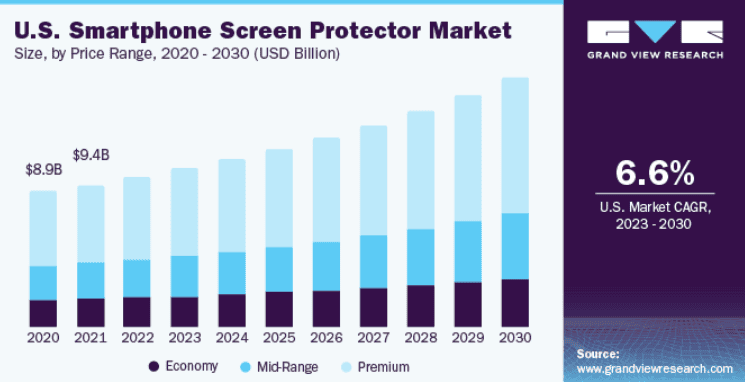 (Source: grandviewresearch.com)
(Source: grandviewresearch.com)
- In the United States, the screen protector industry was valued at about $9.90 billion in 2022, and it’s forecasted to increase at a CAGR of 6.6% from 2023 to 2030.
- Screen protectors appeal to many buyers—both tech-savvy users familiar with smartphone accessories and everyday consumers seeking simple device protection.
- For example, in January 2023, Corning Inc. partnered with Samsung Electronics Co., Ltd. to provide Gorilla Glass Victus 2 for Samsung’s new Galaxy smartphones.
- This updated version of their original glass offers stronger drop protection, especially on rough surfaces like concrete.
#2. Europe
- In 2022, Europe held a market share of 23.52%, and it’s expected to grow at a CAGR of 6.9% from 2024 to 2031.
- In countries like the United Kingdom, smartphones and digital devices are heavily used for work and learning.
- As a result, there’s a growing awareness among professionals and students about the need to prevent screen damage.
- This understanding is helping to boost the demand for screen protectors in the region.
#3. Asia Pacific
- The Asia Pacific region is projected to see the highest growth, with a CAGR of 7.9% between 2023 and 2030.
- The increase in smartphone use—especially in developing nations like India and China—plays a major role in this growth.
- Smartphone Screen Protector Statistics indicate that popular Chinese phone brands like Xiaomi Inc. and Oppo Electronics Corp. are gaining traction. As more consumers purchase their smartphones, the demand for screen protectors also increases.
- To meet these needs, brands are introducing screen protectors with germ-fighting (antimicrobial) layers that reduce the growth of bacteria and viruses on the screen surface.
- This innovation gained attention during the COVID-19 pandemic as people became more concerned about virus transmission through frequently used devices like phones and tablets.
- In 2022, the screen protector market in China was worth around $11.66 billion, leading the Asia Pacific region in total revenue that year. This product was developed to help reduce the spread of harmful viruses, such as COVID-19, during the outbreak in China.
Major Companies in the Smartphone Screen Protector Market
Several well-established brands lead the global smartphone screen protector market, significantly contributing to its growth and competition. These companies are recognized for their emphasis on product quality and ongoing innovation in screen protection technology.
-
ZAGG Inc.
ZAGG is a well-known brand in the industry, best known for its InvisibleShield product line. It offers various screen protectors, particularly tempered glass options, and is known for utilising cutting-edge materials to enhance device safety.
-
Belkin International
Belkin is a global brand that makes a wide range of tech gadgets, that include phone screen protectors. Their products are trusted for being tough, clear, and reliable, offering strong protection while maintaining screen visibility.
-
OtterBox
OtterBox is well-known for its durable smartphone cases, but it also sells screen protectors designed to work with its cases. These protectors are designed to withstand rough use and offer additional protection against scratches, drops, and impacts.
-
Spigen
Spigen offers a wide range of mobile accessories, including screen protectors. They offer basic film protectors and high-quality tempered glass options, enabling customers to select the best option based on their needs and budget.
-
PanzerGlass
PanzerGlass, based in Denmark, is known for producing strong, clear-tempered glass screen protectors. Their products are designed to resist impact and maintain screen clarity, giving users peace of mind when protecting their phones.
-
amFilm
amFilm is a cost-effective brand that provides affordable yet efficient screen protectors. Their products are compatible with various smartphone models, making them a favourite among consumers seeking good value without compromising performance.
Screen Protector Size Segment Analysis
According to Cognitive Market Research, screen protectors come in different thicknesses, and two sizes are leading the market right now:
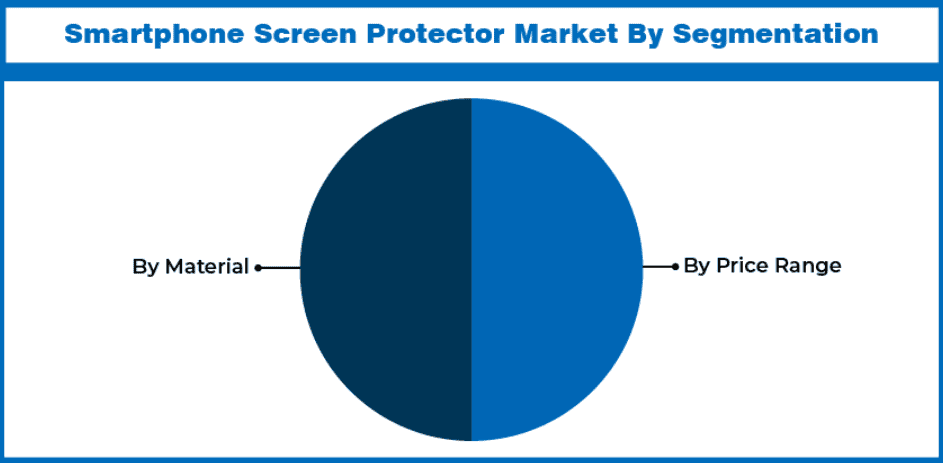 (Source: polarismarketresearch.com)
(Source: polarismarketresearch.com)
#1. 26 mm Screen Protector – Most Popular Choice
- Smartphone Screen Protector Statistics stated that 0.26 mm is currently the most widely used screen protector
- It balances strength and screen sensitivity, making it a top pick for many users.
- This type helps protect devices from scratches, small drops, and daily wear without affecting the screen’s appearance or responsiveness to touch. It’s thin enough to maintain the device’s sleek design while providing sufficient protection.
- Because of these features, many consumers choose the 0.26 mm option for smartphones and other electronics.
#2. 21 mm Screen Protector – Fastest Growing Segment
- The 0.21 mm protector is the fastest-growing type in the market. Thanks to technological advancements, manufacturers can now create ultra-thin protectors that still provide robust screen protection.
- These are light and almost invisible, giving the screen a clean, natural look. As more people prefer slim and modern-looking smartphones and tablets, the demand for thin, lightweight screen protectors is rising quickly.
- Smartphone Screen Protector Statistics indicate that the 0.21 mm size is gaining popularity because it protects the screen while maintaining its stylish appearance.
#3. Common Thickness Options in the Market
- 0.21 mm – Super slim and quickly gaining popularity
- 0.26 mm – Best-selling and well-balanced for daily use
- 0.33 mm – Slightly thicker, offers stronger protection
- 0.48 mm – Thickest option, great for heavy-duty protection
Smartphone Screen Protector Material Insights
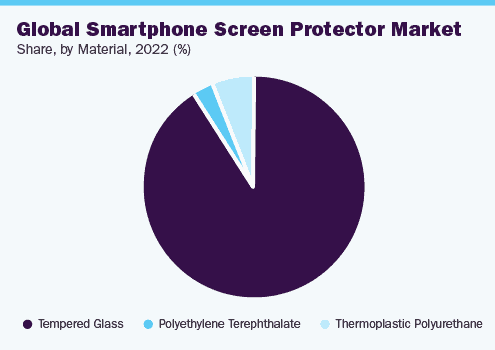 (Source: grandviewresearch.com)
(Source: grandviewresearch.com)
Tempered Glass – The Top Choice for Screen Protection
- In 2023, tempered glass screen protectors had the largest market share, accounting for 90.60% of total revenue.
- This strong demand is primarily due to tempered glass’s several benefits over other materials, such as PET (polyethene terephthalate) and TPU (thermoplastic polyurethane).
- Smartphone Screen Protector Statistics state that tempered glass is renowned for providing robust protection against scratches, cracks, and severe impacts.
- Its multi-layer structure and shock-absorbing qualities make it a favourite among smartphone users.
- It also features an oleophobic coating, which helps keep fingerprints off the screen while maintaining a smooth and natural feel—just like the original phone screen.
- These protectors are anti-glare, reduce reflections, and allow more light to pass, making the screen clearer than other protectors.
- Due to these features, tempered glass is expected to continue leading the market, with a 7.1% CAGR growth rate from 2024 to 2031.
- Another reason for its popularity is that it’s easy to find in stores, online shops, and mobile accessory outlets.
- Many companies now team up with phone brands to design custom protectors that match the device’s look, such as its color, style, and finish.
TPU (Thermoplastic Polyurethane) – Flexible and Growing Steadily
- Smartphone Screen Protector Statistics stated that the TPU screen protector segment is also expanding and is predicted to grow at a 5.5% CAGR from 2024 to 2031.
- TPU protectors are thin and flexible and can heal small scratches over time. They’re also resistant to oil, fingerprints, and smudges, which helps keep screens clean.
- Due to their flexibility, TPU protectors work well with curved screens and in-display fingerprint sensors, which are becoming increasingly common in newer phones.
- Their adaptability and lightweight feel make them a great option for users who prefer something more subtle but still protective.
Conclusion
The smartphone screen protector market has experienced rapid growth in recent years, driven by the increasing number of smartphone users and the need to protect these expensive devices. Tempered glass protectors are popular because they offer strong protection and clear screen quality.
At the same time, ultra-thin options, such as 0.21 mm protectors, are gaining attention for their slim, barely noticeable appearance. As more people purchase high-end phones and seek additional features such as anti-glare surfaces and antimicrobial coatings, the demand for screen protectors continues to rise.
With the global market expected to reach billions of dollars and grow steadily by a strong % each year, screen protectors have become more than just a phone accessory—they’re now a must-have item for protecting smartphones in everyday use. We have shed enough light on Smartphone Screen Protector Statistics through this article.
Sources
FAQ.
This includes accessories such as chargers, phone cases, and charging cables. About 72% of smartphone owners use a screen protector to help prevent scratches, cracks, and everyday screen damage.
A screen protector isn’t completely damage-proof. The level of protection your phone receives depends on various factors, including the height from which it falls, the type of surface it hits, the type of scratches it sustains, and even the humidity level in the air. However, whether made from tempered glass or strong plastic, a screen protector can help prevent scratches, chips, and small cracks, keeping your phone’s screen in better shape.
Depending on the type and quality, some screen protectors can reduce the sensitivity of your touchscreen. This might cause slow or inaccurate responses when you tap or swipe. It can be especially frustrating for people who require precise touch control, such as those involved in gaming or digital drawing.

Barry Elad is a tech enthusiast passionate about exploring various technology topics. He collects key statistics and facts to make tech easier to understand. Barry focuses on software and its benefits for everyday life. In his free time, he enjoys creating healthy recipes, practicing yoga, meditating, and walking in nature with his child. Barry's mission is to simplify complex tech information for everyone.


